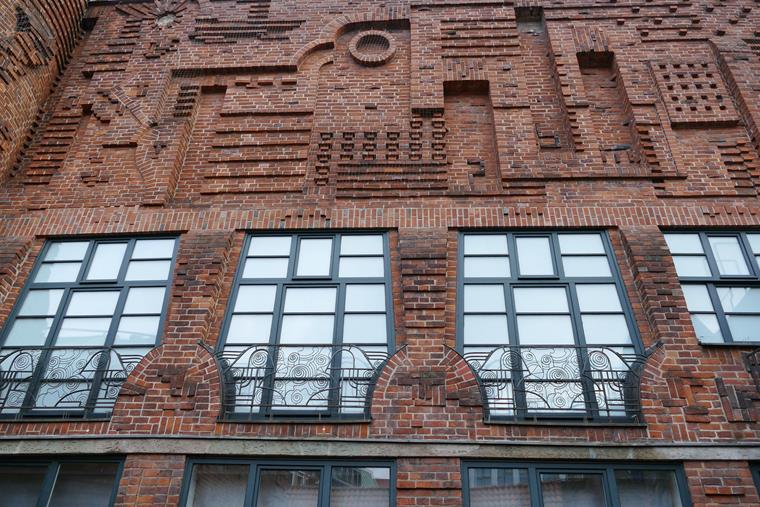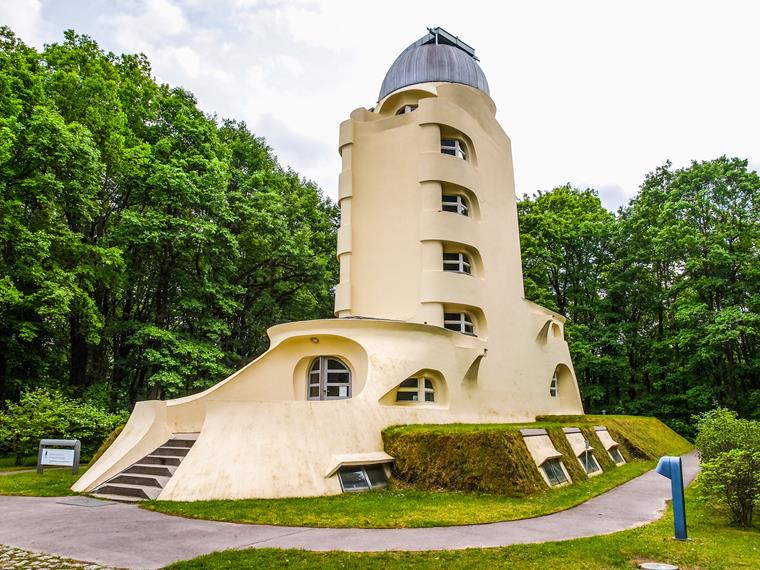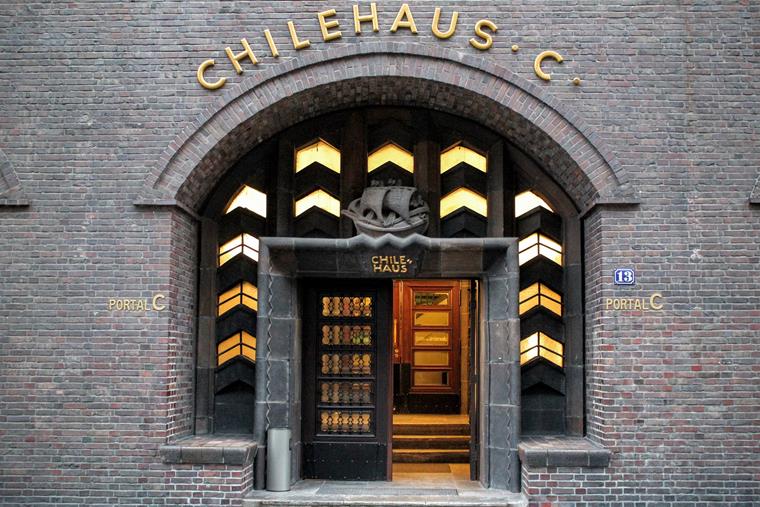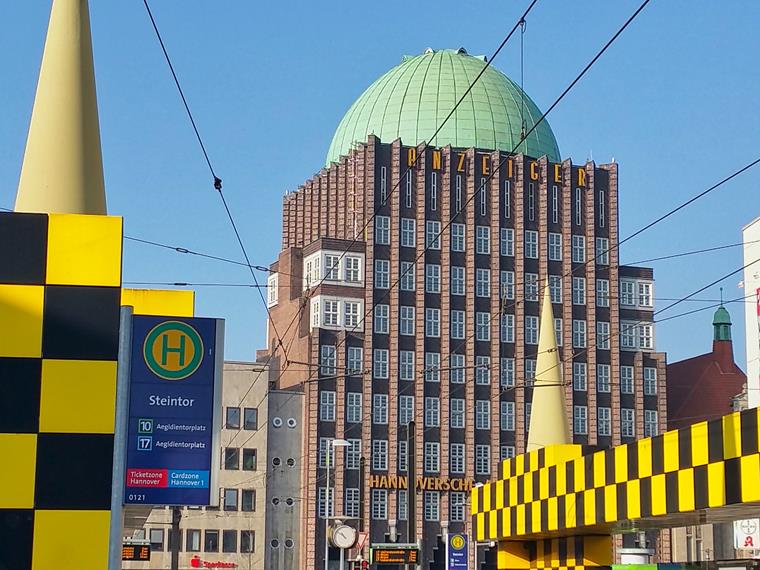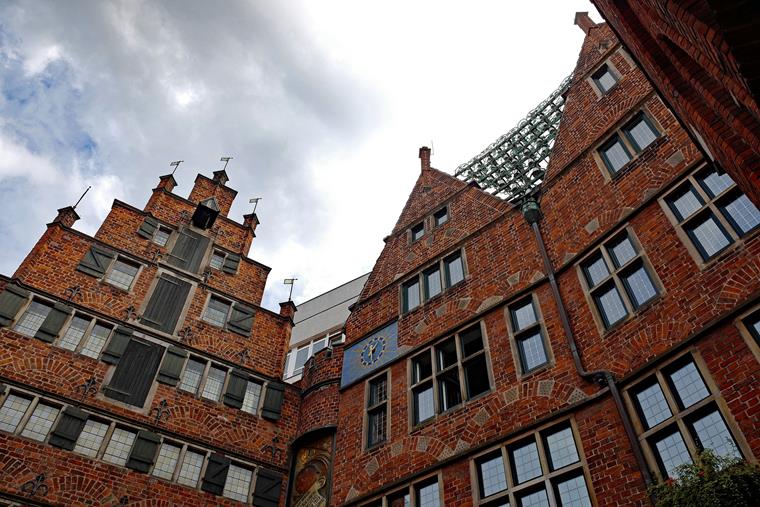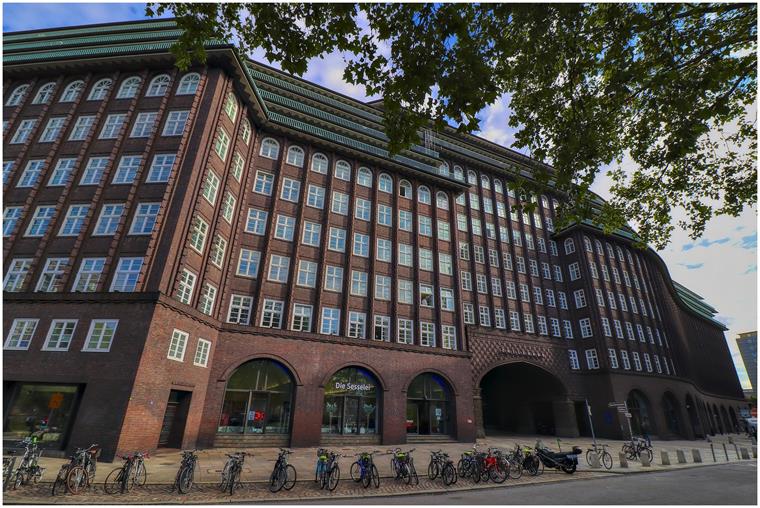After the horrors of World War I, people wanted a way to express their emotions, individuality, and desire for change. In the post-war period, the Expressionism style developed in painting and literature. We can also find numerous works from that period in architecture, even if they are often not as obvious, which does not make these interesting buildings any less fascinating. Expressionism flourished in Germany between the end of World War I and the end of the 1920s.
Expressionism in architecture is an answer and counter-movement to the often austere modern construction with its various trends. The anonymity and interchangeability of simple, straight lines are said to have torn apart the soul of architecture. It was precisely this rift that was intended to be bridged again via individual buildings. Architects wanted to return the soul to construction, so to speak.
Expressionism peaked in Germany in the first decades of the 20th century. To this day, this architectural style has changed our understanding of buildings and interior design. Jagged, expressive outlines clearly stand out from the surrounding buildings and create individual monuments.
In this blog post, we take a look at some of the most impressive Expressionist buildings. What makes Expressionist architecture so special, and what can we learn from it in our modern construction?
Features of Expressionism
The features of Expressionist architecture can be seen at first glance in many of the buildings. While Modernism had previously been characterized by straight lines and minimalism, Expressionists wanted to distinguish their buildings through unconventional shapes and structures. Emotions and movement needed to find their way back into architecture. This resulted in organic and often asymmetrical building with interesting facade designs.
As in most construction movements, new building materials can also be found in Expressionism. Brick Expressionism, which is widespread mainly in northern Germany, is particularly well-known. Rough, exposed brick walls were used to create a pure aesthetic.
Light and shadow were also used consciously. Large windows in Expressionist buildings allow daylight to enter, while unusual window shapes and curved facades often create an almost mystical atmosphere with their play of light and shadow. This makes visiting such places a very special experience.
Examples of Expressionist Architecture
Expressionism in the construction industry was especially widespread in Germany. For this reason, we will focus our journey on German buildings with strong Expressionist features. Together, we'll take a closer look at these impressive buildings. What makes them special? What is the story behind them? Get excited!
Einstein Tower
Potsdam
Let's start with a somewhat controversial building in terms of its classification as Expressionist. The Einstein Tower was the first significant building by architect Erich Mendelsohn, who later became well-known. Mendelson himself never categorized his building as Expressionist, and even among experts there is still disagreement.
The harmonious shapes are more suited to organic architecture, as deliberate disharmony is an important characteristic of Expressionism. Nevertheless, the Einstein Tower is usually classified as Expressionist. It was designed as a reinforced concrete structure, but this construction technique was not fully mature at the time, and there were already problems during the construction. A large part of the structure was reworked using solid construction with bricks. A spray plaster finally ensured the homogeneous appearance. The thermal stresses between the different materials repeatedly led to new problems, which frequently called the tower's continued existence into question.
The tower was built between 1919 and 1924 in direct cooperation with the eponymous physicist Albert Einstein and astronomer Erwin Finlay Freundlich. In fact, this is not just a building that was simply dedicated to Einstein. It is a solar observatory; to be precise, it was the most important solar telescope in Europe until World War II. A rather unusual combination of science and architecture was created here.
The original intention was to prove the red shift of spectral lines in the gravitational field of the Sun, based on the theory of relativity. Unfortunately, it later became clear that this intention was not feasible. At the end of the 20th century, the Einstein Tower was completely renovated, and then reopened on July 1, 1999.
A powerful solar research facility is still located in the tower today. The image resolution is so high that a coin the size of one euro could be recognized easily even from a distance of 3 miles. This makes the observatory an important addition to the already well-known large solar telescopes on the Canary Island of Tenerife.
Today, the Einstein Tower is open to visitors by appointment and it also plays a major role in the training of young scientists at the Leibniz Institute for Astrophysics Potsdam (AIP).
Buildings in Leipzig Zoo
Leipzig
In 1878, restaurateur Ernst Pinkert expanded his restaurant, "Pfaffendorfer Hof", with a wild animal enclosure. In doing so, he laid the foundation stone for one of the first and still one of the most beautiful zoos in Europe. After the corporation that had bought the zoo went bankrupt as a result of World War I, it became the property of the City of Leipzig in 1920.
As a result, new modern facilities were built, many of which still exist today. One of them is the Elephant Temple, opened in 1926. Architect James Bühring designed the elephant house in the Expressionist style. It is a detached, longitudinally rectangular building with an outdoor area. The single-story building is characterized by a dark clinker brick facade and is strongly structured in a manner typical of Expressionism.
In the meantime, the Elephant Temple has been extensively renovated, but has retained its Expressionist charm. The free-flight aviaries built in 1928 and the old Bear Castle also show clear features of Brick Expressionism.
Chilehaus
Hamburg
Now, we come to perhaps the most famous building of Expressionism. Not far from Hamburg's Central Station, the spectacular outline of the Chilehaus building is an absolute eye-catcher. This imposing structure is still considered a symbol of the economic upswing of the Hanseatic City of Hamburg after World War I and has become a landmark of the city.
The future building owner, a destitute salesman, emigrated to Chile in his youth. At the age of 60, Heinrich Brarens Sloman returned as a rich man and wanted to do something good for his hometown. In October 1922, he purchased a piece of land of about 53,800 ft² in addition to 4.8 million bricks. His goal: the construction of a unique monument in the shape of a passenger ship, to commemorate the crossing to Chile that fundamentally changed his life.
Renowned architect Fritz Höger took over the management of the construction works, and in 1924, Brick Expressionism had another attraction in the center of Hamburg. As a ten-story building, the Chilehaus has an incredible 1.5 acres of floor area and about 9 acres of effective space. The striking tip of the building holds a European record for the sharpest facade angle and is reminiscent of an imposing ship's bow.
For over 50 years, numerous well-known companies from various industries have been based here. In 1993, Union Investment Real Estate GmbH (formerly DIFA) acquired the Chilehaus, which has been a listed building since September 27, 1983.
Anzeiger-Hochhaus (Gazette-Building)
Hanover
We also encounter this well-known name in Hanover. Fritz Höger designed another monument of Expressionism for the publisher Hannoverscher Anzeiger A. Madsack & Co.. In 1928, a building with a unique architectural style opened here as the journalistic and entertainment center of the city.
It became a landmark not only due to its striking facade, but also because of the green dome of the roof with a height of 39.37 ft, which housed a planetarium that was also used as a movie theater. This dome structure made of green patinated copper sheeting is unique in German high-rise construction. A cultural movie theater with 210 seats and its own theater organ was built here.
Like many landmarks, the Anzeiger-Hochhaus building was damaged in World War II, but, unlike many other buildings, survived almost unscathed. It withstood 88 air attacks without major damage, mainly due to its skeleton structure, which provided it with good stability.
After the planetarium burned down as a result of an attack on March 25, 1945, the movie theater changed hands again and again until it was added to the theater on the Raschplatz in 1982. After extensive renovations, Germany's highest movie theater is still open to all movie-loving visitors under its original name, "Hochhaus-Lichtspiele".
The area below the dome theater is also special. The well-known magazine "Der Spiegel" was founded in the press building after the World War II. The first issue was published on January 4, 1947. Moreover, the Anzeiger-Hochhaus is the media venue of the first edition of the magazine "Stern", which first saw the light of day on August 1, 1948.
The publishing company Madsack still publishes the newspapers Hannoversche Allgemeine Zeitung (HAZ) and New Press (NP) here today. As part of the Hanover Media Center, the Anzeiger-Hochhaus houses the regional editorial offices of RTL and Sat.1, as well as departments of ffn and Antenne Niedersachsen.
Buildings in Böttcherstraße
Bremen
Let's stay in the north of Germany and travel to Bremen together. Here we can find numerous fascinating buildings, from the Middle Ages to modern architecture. What is interesting for us today, however, is the secret main street of Bremen. Böttcherstraße is a true work of art. The buildings were constructed between 1922 and 1931 and the street, with a length of about 108 m (354 ft), offers space for trading, arts, culture, and of course, breathtaking Expressionist architecture.
It is obvious at first glance that the designer of these beautiful and unique buildings was actually a sculptor. With the Böttcherstraße buildings, Bernhard Hoetger created a rare example of how Expressionist architecture can shape an entire street.
The most famous of them is the "Glockenspiel House". Every hour, 30 Meissen-porcelain bells ring here from January to March at noon, 3 p.m., and 6 p.m., and from April to December between noon and 6 p.m., while ten carved wooden panels rotate on the front of the house. Well-known conquerors of the ocean are depicted here.
Anyone interested in museums will also find an Expressionist Gesamtkunstwerk here. The first house in the world dedicated to a female painter, the Paula Modersohn-Becker Museum welcomes numerous visitors and shows them the artist's works as well as exhibitions of classical modern art.
Architecturally, the building is truly a masterpiece. Two towers rise above the roof, which is not even visible, while inside, the curved walls and organically shaped staircases almost give the impression of being on a walkable sculpture. In the craftsmen's courtyard, the inner courtyard of the museum, artistic craftworkers have exhibited their goldsmithing and glass-blowing art, as well as the traditional production of sweets since the museum's opening in 1926.
However, the most striking feature of Böttcherstraße is the bronze relief created in 1936 by Bernhard Hoetger, which decorates the entrance to the street. A youth falling from the sky defensively points his sword at a three-headed dragon creature. The "Lichtbringer (Bringer of Light)" is probably the most photographed object of the entire street.
Conclusion Expressionism
Expressionist architecture was and is something very special. After World War II, this movement expanded the boundaries of traditional building methods and created a counterpart to Neues Bauen with its offshoots.
Architects were once again guided by emotion, individuality, and the desire for change. The buildings still have strong distinctive features today, which make them unique pieces of art.
What can we learn from Expressionism?
First of all, Expressionist architecture is a movement that calls for creativity and for exploring unconventional ideas. This approach may also help us in the modern construction industry to find innovative solutions to technical challenges. We have to overcome traditional ways of thinking and building in order to evolve. Even if that means taking risks and breaking new ground.
Expressionist architecture shows once again that building design should focus on more than technical requirements. The aesthetic aspects and the aspiration to create something individual also make a building.
One-size-fits-all solutions are not always the best option. It is often necessary to look outside the box of the traditional construction industry, and it is precisely this attitude that has helped the followers of Expressionism to design buildings that not only serve their purpose, but also remain in people's memories for a long time.
Another thing we can learn from Expressionism is the strong collaboration between architects, engineers, and artists to implement complex concepts. In order to build coherent structures that meet all the requirements and standards, it is absolutely necessary to constitute interdisciplinary teams. Together, you can develop and learn from each other in order to create innovative solutions for joint projects.
Once again, our architectural history has shown us that fascinating buildings are created when art and the construction industry work hand in hand. Expressionist architecture goes far beyond the limits of functionality and creates breathtaking syntheses of art that will continue to attract many admiring glances in the future. Even modern architects often resort to Expressionist elements in order to incorporate emotional and individual experiences into their buildings.
